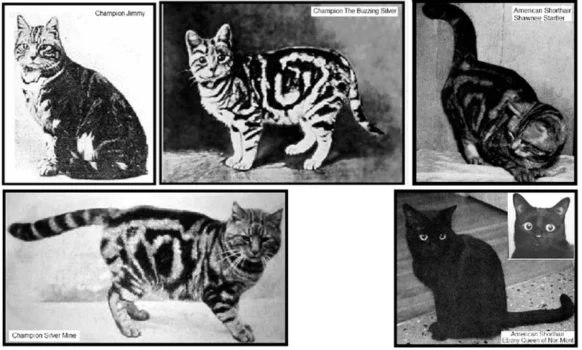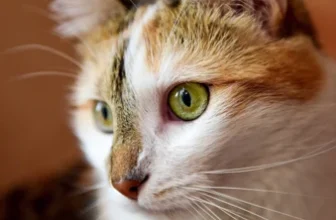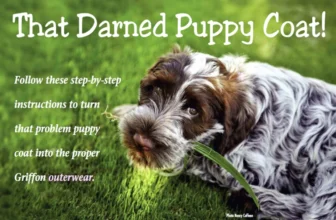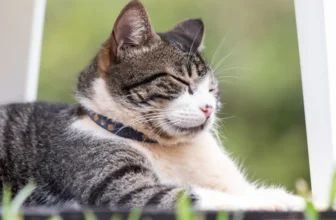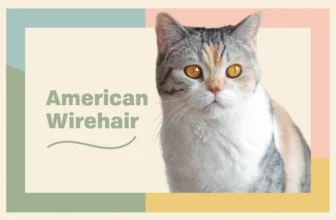The American Wirehair is a unique breed of cat that has fascinated people for many years due to their distinctive coat. This breed has come a long way in terms of recognition, appreciation, and understanding. How did the American Wirehair’s coat come to be? What were the struggles and triumphs of the breed’s early years? What are the distinctive health concerns associated with this breed? In this article, we will explore the evolution of the American Wirehair’s coat, from their origins as strays to their recognition as show cats. Join us on this journey of discovery and find out all you need to know about this remarkable breed.
The Origins of the American Wirehair Coat
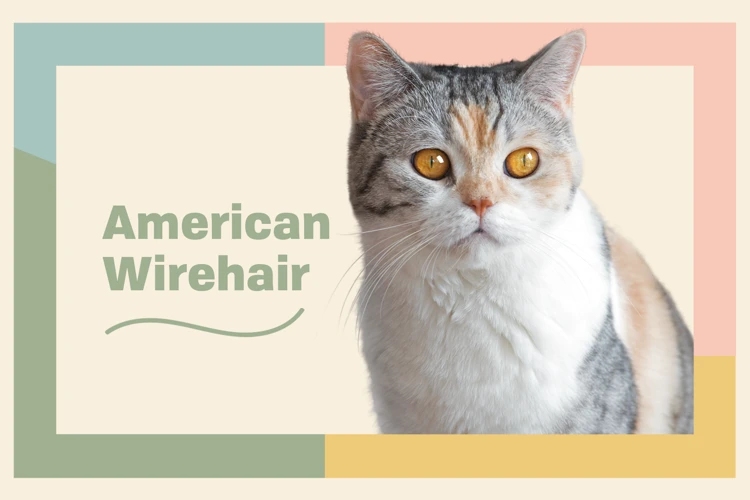
The American Wirehair is a unique and captivating breed that has a distinctive coat. This cat has a fascinating history, including the tale of how its coat came to be. In this section, we’ll explore the origins of the American Wirehair coat, including the first American Wirehair, parent breeds, and the unique genetic mutation. If you’re interested in learning more about the traits of the American Wirehair coat, you can check out our article on American Wirehair coat traits. Additionally, if you’re an American Wirehair owner, be sure to read our guide on how to groom your cat’s coat, which can be found at grooming the American Wirehair coat. Let’s dive in and learn about the genetics behind this fascinating coat pattern.
The First American Wirehair
The first American Wirehair kitten was discovered in upstate New York in 1966. The kitten, named Adam, was found by Joan and Bill O’Shea on their farm in Verona. Adam’s unique wiry coat caught the attention of Joan and her friend, Gene Ducote, who was a cat breeder. Upon further investigation, it was discovered that Adam’s coat was the result of a spontaneous mutation that had never been seen before in cats.
The discovery of Adam was the start of a new breed of cats that would soon become popular in the United States. The O’Sheas and Ducote worked tirelessly to establish the American Wirehair as a breed. They began to crossbreed Adam with American Shorthairs, the parent breed of the American Wirehair. Most of the kittens born from these crosses had wiry coats, proving that the mutation was dominant.
This successful crossbreeding led to the establishment of the American Wirehair as its breed by the Cat Fanciers’ Association (CFA) in 1967. Adam’s descendants were among the first registered American Wirehairs.
It is interesting to note that despite Adam’s unique coat, his specific genetic mutation has never been identified. This makes the American Wirehair’s wiry coat even more unusual and special. To this day, breeders have to rely on selective breeding to maintain the unique texture of the American Wirehair’s coat.
The discovery of Adam has given us one of the most fascinating and unique breeds of cats with a coat that is unlike any other. Despite being dismissed by some as strays, the American Wirehair has proven to be a successful breed and continues to gain in popularity.
Parent Breeds of the American Wirehair
The American Wirehair breed is a result of a spontaneous mutation that occurred in a litter of barn cats in upstate New York in 1966. Although the breed has gained popularity, there is little known about its ancestry. However, it is believed that the American Wirehair shares some parentage with the American Shorthair, as they share similar physical appearances and personalities.
Additionally, it is believed that the American Wirehair mutation may also be related to the American Curl breed, which also has a curled fur pattern. However, this has not been proven and remains purely speculative. While there is still much to be discovered about the breed’s lineage, it is clear that the American Wirehair is a unique and treasured addition to the cat family.
Parent Breeds of the American Wirehair
| Breed | Characteristics |
|——-|—————-|
| American Shorthair | – Broad and muscular build
– Round head with prominent cheeks
– Wide-set and alert eyes |
| American Curl | – Sleek and slender build
– Small ears that curl back and inward
– Almond-shaped eyes |
While the exact parentage of the American Wirehair remains a mystery, it is likely that it shares some relation to the American Shorthair and potentially the American Curl. Understanding the breed’s history and ancestry is essential in further understanding and appreciating this unique and beloved breed. For more information about the genetics of American Wirehair coat texture, please see this article.
The Unique Mutation
The American Wirehair’s coat is a result of a natural mutation that occurred on a farm in upstate New York in 1966. The story goes that a red and white male barn cat with an unusual coat was caught by a local couple. They decided to keep him as a pet and named him Adam.
This mutation was unique because it had not been seen in any other breed before. Adam’s coat was curly, coarse, and springy to the touch. Breeders found that the mutation was dominant, which means that if a cat carried the gene, it was highly likely that its offspring would have the same wirehair coat.
As a result, Adam became the founding father of a new breed of cats – the American Wirehair. Today, his descendants can be found in cat shows and as beloved pets across the United States.
Despite their unique coat, American Wirehairs are not immune to popular myths and misconceptions about their breed. Some people believe that their wirehair coat is uncomfortable for them, but in reality, their coat is just as comfortable and soft as any other cat breed.
The American Wirehair’s coat is also not limited to just one pattern or color, despite some myths that suggest otherwise. They can come in a range of patterns and colors, from solid to tabby, to bi-color and even tri-color. Some common patterns include tortoiseshell, calico, and white with spots.
To better understand the American Wirehair’s coat patterns, it’s important to recognize the different recognized patterns within the breed, which we’ll discuss further in our in-depth article on American Wirehair coat patterns.
The Early Years: Outcast to Breed Recognition
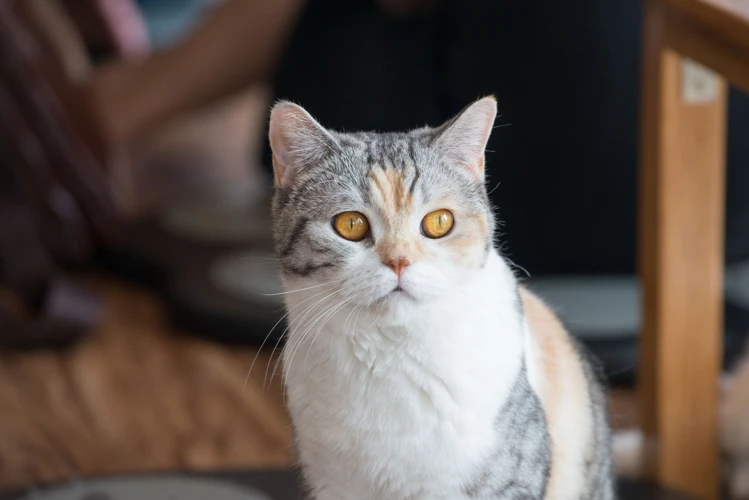
As intriguing as the American Wirehair’s unique coat is, it wasn’t always met with open arms. In fact, the breed was once considered an outcast among the feline community. Its journey from stray cats to show cats was a long one and is a testament to how perseverance and passion can lead to breed recognition. Let’s delve into the early years of the American Wirehair and see how it gained popularity in the feline world. For more information about common myths surrounding the American Wirehair coat, check out our article “American Wirehair Coat Myths: Busted or Confirmed?”.
Recognition by the CFA
In 1966, the American Wirehair was accepted as a new breed for championship competition by the Cat Fanciers’ Association (CFA), which is the largest cat registry in the world. The CFA is responsible for identifying and recording pedigrees of various cat breeds, setting breed standards, and hosting cat shows.
Recognition by the CFA was a big achievement for the American Wirehair breed. It meant that this once-stray cat was now officially recognized as a distinctive breed with unique qualities and characteristics. The American Wirehair was now eligible to compete for championship titles at cat shows and was no longer just an outcast with a scruffy coat.
To gain recognition by the CFA, the American Wirehair had to meet certain standards and criteria. According to the CFA breed standard, the American Wirehair should have a medium-sized body with a broad chest, short legs, and a well-rounded rump. The head should be medium-sized with high cheekbones, a broad forehead, and a Roman nose. The eyes should be large, bright, and expressive, and the ears should be medium-sized and slightly rounded at the tips.
The most important feature of the American Wirehair, however, is its coat. The CFA requires that the American Wirehair’s coat be dense, resilient, and springy to the touch, with a coarse, wiry texture and crimped or bent hairs. The curls in the coat of an American Wirehair should be present from birth and visible even in kittens.
To ensure that the American Wirehair breed continues to meet these standards, the CFA has established rigorous breeding programs, which involve careful selection of mating pairs to maintain the desired traits in the breed. This has helped to preserve the original characteristics of the American Wirehair and maintain them throughout the years.
Recognition by the CFA has helped to establish the American Wirehair as a unique and distinguished breed with a fascinating history. The breed has come a long way from its humble beginnings as a stray cat to becoming a recognized and celebrated breed at cat shows worldwide.
Coat Variations within the Breed
The American Wirehair has a unique coat type, but there are still variations within the breed. While all American Wirehairs have a wiry, crimped outer coat and a soft undercoat, the color, texture, and length of their fur can vary.
Color: American Wirehair cats can come in a variety of colors such as white, black, red, cream, blue, and the different combinations. Some variations are solid while others are spotted or striped.
Texture: The texture of an American Wirehair’s coat can also vary, with some being coarser or smoother than others.
Length: The length of an American Wirehair’s coat can also differ from cat to cat. Some have short coats, while others have medium or long coats.
To give an idea of the different combinations that exist within the breed, here is a table outlining some popular coat variations for American Wirehair cats:
| Coat Variation | Description |
| — | — |
| Solid | A uniform coat color with no markings or patterns |
| Bi-Color | A coat with two colors, one of which is white |
| Calico | A tri-color coat with white, black, and orange patches |
| Tabby | A coat pattern with stripes, dots, or swirling patterns |
| Tortoiseshell | A coat with having a “tortoise” shell pattern, usually black and/or orange |
| Smoke | Fur with a white base at the root, gradually darkening to another color at the tips |
| Silver | Light-colored hairs mixed in with the base color, giving a slightly metallic look |
It’s essential to note that while the American Wirehair’s coat may have variations, the unique mutation of the breed sets them apart from any other cat breed in terms of coat type. No matter the coat variation, the American Wirehair’s coat remains a fascinating and substantial part of the breed’s evolution.
The Show Cat Phenomenon
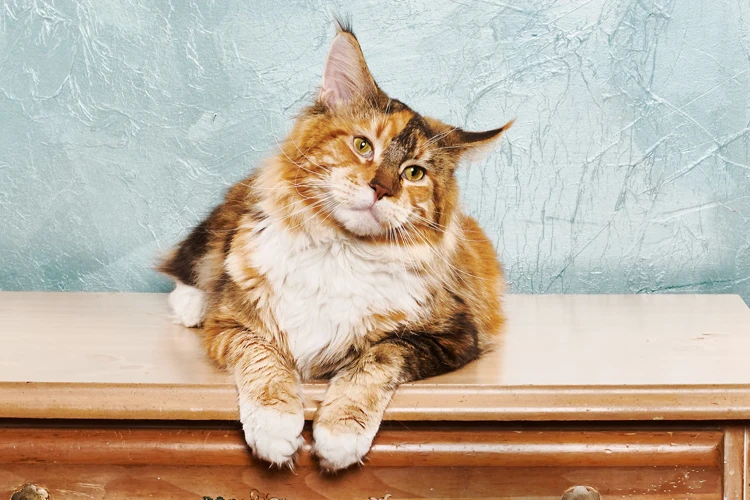
As the American Wirehair’s coat continued to evolve and gain recognition, it eventually found its way into the world of cat shows. The unique texture and appearance of the American Wirehair’s coat make it a standout among other breeds, and it quickly gained popularity among cat enthusiasts. From grooming to competition, the show cat phenomenon has brought new attention to the American Wirehair and raised the bar for breed standards. Let’s take a closer look at what makes these cats so special in the show world.
Coat Maintenance for Show Cats
Show cats are judged on their appearance and as such, proper coat maintenance is crucial. The American Wirehair cat breed requires special attention when it comes to their fur. Here are some tips for maintaining the perfect show coat for your American Wirehair cat:
- Regular Brushing: Brushing is important for removing dead hair and keeping the coat shiny. With their unique curly and wiry coat, American Wirehairs require frequent brushing with a stainless-steel comb or slicker brush to prevent matting.
- Bathing: American Wirehairs do not need regular baths but can be bathed occasionally to keep their coat clean and healthy. Use a gentle cat shampoo and warm water, taking care to avoid getting water in their ears and eyes. Pat dry with a towel and avoid using a hairdryer.
- Trimming Nails: Long nails can snag the fur of the American Wirehair, causing matting and discomfort. Trim their nails regularly to prevent this from happening.
- Ears and Eyes: Check their ears and eyes regularly for any signs of infection or discomfort. Keep the area around the ears and eyes clean and use a damp cloth to wipe away any discharge.
- Dental Care: Dental hygiene is an essential part of overall cat health. Brush your American Wirehair’s teeth regularly with a soft-bristled brush and cat-specific toothpaste to prevent dental issues and bad breath.
- Diet: A healthy diet can affect the condition of your cat’s fur. Feeding them high-quality cat food with the appropriate nutrients will promote a shiny and healthy coat.
Taking care of your American Wirehair cat’s coat is an important part of being a responsible pet owner. Through regular grooming, attention to detail and a healthy diet, your American Wirehair can achieve a flawless show coat.
Achievements in Cat Shows
The American Wirehair breed has come a long way since its humble beginnings as a stray cat with a unique coat. In recent years, American Wirehairs have become increasingly popular in cat shows, and have earned several notable achievements.
Best in Show Awards: One of the most prestigious awards at cat shows is the Best in Show title. American Wirehairs have earned this title multiple times, including at the CFA International Cat Show in 2018, where an American Wirehair named “GP, RW Bistoufly Sugar Bop” won Best in Show.
Championship Titles: American Wirehairs have also earned numerous championship titles, which are awarded based on the number of points a cat earns in various cat show competitions. For example, a cat must earn 200 points to become a Grand Champion in the CFA. Several American Wirehairs have achieved this title, including “GC, RW Glevum Tansy” and “GC, BWR, NW Bistoufly Burt Bacharach.”
Regional Wins: In addition to national and international competitions, American Wirehairs have also earned numerous regional wins. These are awarded based on the number of points a cat earns in shows within a specific region. American Wirehairs have earned regional wins in many regions throughout the United States.
American Wirehairs have proven to be successful competitors in cat shows, earning numerous awards and titles. Their unique coat is just one of the many reasons why they stand out in the competitive world of cat shows.
Health Concerns with the American Wirehair Coat
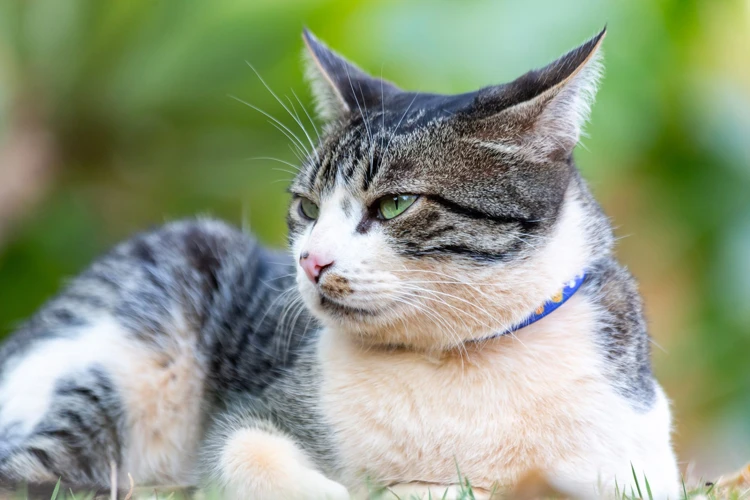
As much as we love the American Wirehair for their unique and beautiful coat, we cannot ignore the potential health concerns that may arise from their genetic makeup. It’s important to understand the special attention and care that these cats may require in order to maintain their health and well-being. In this section, we will discuss some of the health concerns that are associated with the American Wirehair coat, as well as tips for grooming and preventing any potential issues. Let’s take a closer look at the possible challenges that may arise with this breed.
Possible Skin Allergies
American Wirehair cats are a relatively healthy breed, but as with any breed, they are not immune to potential health concerns. One issue that some American Wirehairs may experience is skin allergies. Allergies occur when the immune system overreacts to a particular substance (known as an allergen) in the environment, causing a range of symptoms such as itching, redness, and inflammation.
Symptoms of Skin Allergies:
- Excessive scratching and itching
- Redness and irritation
- Scabs or crusts on the skin
- Bald patches and hair loss
If you notice any of these symptoms in your American Wirehair, it is important to visit a veterinarian for a proper diagnosis and treatment plan. Skin allergies can be caused by a variety of allergens, such as pollen, dust mites, or certain foods.
Treatment for Skin Allergies:
- Anti-inflammatory medication to reduce itching and inflammation
- Topical creams and ointments to soothe the skin and help it heal
- Prescription shampoos to remove allergens from the skin
- In severe cases, allergy shots may be recommended to desensitize the cat to the allergen
In addition to seeking veterinary care for skin allergies, there are also steps that cat owners can take to prevent allergic reactions in their pets. These include keeping the cat’s environment clean and free of dust and potential allergens, feeding the cat a high-quality diet, and using natural, fragrance-free grooming products.
Skin allergies are a potential concern for American Wirehair cats, but with proper care and treatment, affected cats can live happy, healthy lives. As always, consult with a veterinarian if you are concerned about your cat’s health or well-being.
Special Grooming Needs
The American Wirehair’s unique coat texture requires special grooming techniques. Unlike other breeds, their fur does not easily mat, but it still requires regular maintenance to keep it healthy and shiny. Here are some important grooming tips to keep in mind for your American Wirehair:
– Brush their coat regularly: While their fur doesn’t mat easily, it can still become tangled, especially around their ears and tail. To prevent this, brush your American Wirehair’s coat at least twice a week with a gentle bristle brush or a metal comb. This will help to remove any dead hair and distribute natural oils throughout their coat.
– Give them regular baths: The American Wirehair must be bathed regularly to keep their coat healthy. Because their fur is dense and curly, dirt and oil can get trapped quickly. Bathing them every two to three weeks with a gentle pet shampoo can help remove any dirt build-up.
– Be gentle with their coat: Because the American Wirehair’s coat is unique, it is important to handle it gently while grooming. Avoid using force or pulling on their fur, as this can cause damage. Instead, take your time and be gentle while brushing or combing their coat.
– Trim their nails: Regular nail trims are crucial for any cat’s health, but especially for the American Wirehair. Because their fur texture is wiry and dense, they tend to scratch more, which can lead to their nails becoming too long. Trimming their nails every two to three weeks can help to prevent painful ingrown nails.
By following these simple grooming tips, you can help keep your American Wirehair healthy and happy. Remember to be gentle with their unique coat, and give them the proper care they need to maintain their special texture.
Future of the American Wirehair Coat Evolution
The future of the American Wirehair breed is exciting for cat lovers who adore this unique and beautiful feline. As mentioned before, this breed has only been around for about 50 years, making it a newcomer to the cat show circuit. However, during this relatively short time, the breed has garnered a lot of attention and admiration from cat fanciers.
Further Coat Developments
Since this breed was discovered through a genetic mutation, there is always the potential for further coat developments. While the breed standard currently recognizes only one coat type, we might see further variations in the future. Perhaps a longer-haired American Wirehair will emerge or a coat with different textures or patterns.
Genetic Testing
As genetic testing becomes more accessible and affordable, breeders can select for specific traits they want to see in their kittens. While genetics should never be the sole determining factor in breeding choices, having this resource allows for more informed decision-making. This could lead to further refinement of this breed’s unique coat traits.
Increased Popularity and Awareness
As more cat lovers discover and fall in love with American Wirehairs, this breed’s popularity and awareness will likely increase. More breeders will take on the challenge of breeding these unique felines, and more people will choose to add an American Wirehair to their family. With increased interest and popularity, more resources will become available to help keep the breed healthy and thriving.
Continued Health Monitoring
Like all breeds, the American Wirehair is not without its health concerns. As this breed becomes more popular, we will see increased veterinary research and monitoring of potential health issues. This will allow us to better understand how to prevent and treat any health concerns that may arise.
The future looks bright for the American Wirehair coat evolution. With continued breeding practices, genetic testing, and health monitoring, we may see further developments in this breed’s unique coat. As more people discover and fall in love with these cats, we can expect increased popularity and awareness, leading to even more resources for this wonderful breed.
Conclusion
After tracing the evolution of the American Wirehair’s coat from its humble beginnings as a stray to its current status as a recognized breed and a show cat sensation, it’s clear that this breed has come a long way. The unique mutation that gave rise to its coarse and wiry coat has brought about not only aesthetic appeal but also health concerns that need to be addressed.
Despite its unusual coat, the American Wirehair has gained popularity among cat enthusiasts and show judges alike, thanks to its playful and affectionate nature. Whether as a companion or a show cat, the American Wirehair has proven to be a resilient and charming breed that adapts well to different environments and lifestyles.
Going forward, it is important for breeders and owners to pay attention to the health needs of the breed, including possible skin allergies and the need for special grooming. Additionally, efforts to maintain the breed’s genetic diversity should be pursued to prevent any potential genetic health issues down the line.
Overall, the evolution of the American Wirehair’s coat tells a fascinating story of how a chance mutation can create an entirely new breed that captivates the hearts of many. As the breed continues to grow and evolve, it will be exciting to see what the future holds for this unique and beloved feline.
Frequently Asked Questions
What makes the American Wirehair coat unique?
The American Wirehair’s coat is unique due to a natural mutation that results in a wiry, crimped texture. No other breed has a coat quite like it.
Are American Wirehairs hypoallergenic?
While no cat breed is completely hypoallergenic, some people with allergies may find that they have fewer symptoms around American Wirehairs due to their unique coat texture.
How did American Wirehairs gain breed recognition?
The American Wirehair gained breed recognition from the Cat Fanciers’ Association (CFA) in 1967 after being discovered as a stray cat in upstate New York and selectively bred to preserve its unique coat trait.
Can American Wirehairs have different coat colors?
Yes, American Wirehairs can come in a variety of colors and patterns including solid, tabby, tortoiseshell, and calico.
What grooming requirements do American Wirehairs have?
American Wirehairs require regular grooming to maintain the texture and appearance of their unique coat. This includes regular brushing and occasional bathing to remove excess oils.
What health concerns should American Wirehair owners be aware of?
American Wirehair cats may be prone to skin allergies and some individuals may require specialized diets or grooming routines to avoid developing skin problems.
How do American Wirehairs perform in cat shows?
American Wirehairs have achieved success in cat shows, particularly in the Household Pet category where cats without pedigrees can compete based on criteria such as personality, grooming, and overall appearance.
Can American Wirehairs live in households with other pets?
American Wirehairs can usually adapt to living with other pets if introduced properly, although it’s best to supervise interactions between cats and other animals to ensure everyone gets along safely.
Do American Wirehairs have any behavioral quirks?
Some American Wirehairs may be more independent than other cat breeds, but they are generally friendly and affectionate with their human families. They may also be more active than other breeds and enjoy interactive playtime and puzzle toys.
What should potential owners know before adopting an American Wirehair?
Potential owners should consider the grooming requirements of the breed and be prepared to provide regular care to maintain the unique coat texture. They should also be aware of any potential health concerns and be prepared for an active and playful cat with a friendly personality.

